Syracuse Football Offensive Preview
The Orange? Wait a minute, I thought New York was the "Big Apple"?????
Syracuse is led by first year head coach Fran Brown, the former defensive backs coach for the 2022 National Champion Georgia Bulldogs. This is Fran Brown’s first ever head coaching job, and he’s led the ‘Cuse to an admirable 6-3 record so far this season. That said, the dude gives me some strange vibes, and recently admitted that he can’t sleep in the same bed as his wife when the team loses, because he refuses to shower; showers are for winners.
This will be the first matchup between the two teams since #11 Cal demolished #10 Syracuse 43-0 in Berkeley back in 1968. This was back when the Syracuse “Orangemen” referred to this:
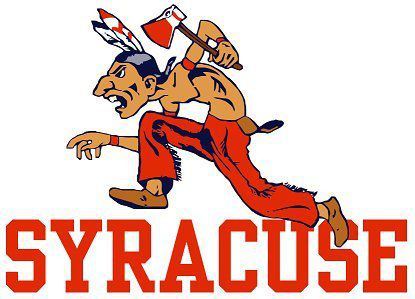
I don’t know how to properly work this tidbit into the article, but did you know that Syracuse has never won the Orange Bowl? The Syracuse Orange is 0-3 in the Orange Bowl. Really makes you think, doesn’t it?
As you can see, these two teams have a long and storied history together, and so I have no shortage of background material on which to riff.
Syracuse is 4th in the FBS in passing yards per game (346 yards/game), led by first year offensive coordinator Jeff Nixon; longtime NFL RB coach and most recently, the New York Giants running backs coach. As the Mimi RB coach, Nixon worked with some rising coaching stars, like Dan Campbell (Lions head coach), Zac Taylor (Bengals head coach), and Ben Johnson (the Lions offensive coordinator). Nixon has leaned on that NFL experience to implement a pro-style offense with spread elements, with a lot of motions, shifts, and other elements to out-scheme the defense.
Quarterback
Syracuse is led by Ohio State’s transfer quarterback, Kyle McCord. Despite leading Ohio State to an 11-1 record with 3170 passing yards and 24 TDs/6 INTs, McCord was unceremoniously dumped by Ohio State and their fans for the high crime of losing to eventual national champion Michigan. At Ohio State, he was considered more of a “game manager” quarterback, but it’s clear this year that it’s McCord’s talent and play that is driving this offense; McCord’s averaged 264 passing yards per game at Ohio State and now averages 350 passing yards per game at Syracuse. McCord leads the FBS in pass attempts, so you know that Syracuse is going to throw the ball and throw it often— Syracuse averages 47.8 pass attempts per game (1st in the FBS) and 28.6 rush attempts per game (124th in the FBS). He has already elevated his NFL Draft stock this year from fringe pick to maybe a mid-round pick (NFL front offices always overvalue QBs, so it’s hard to guess). McCord is accurate, with decent arm strength, and experienced enough not to be fooled by many coverages.
McCord’s whole game is to try and place the ball where only his receiver can get it, and so he loves throwing back shoulder fades. McCord will throw to a spot and drop it in for his receiver:
McCord loves to take shots down the near or far sideline where he can get his receivers in one-on-one coverage to allow his receivers to make a play on the ball:
McCord will also look to take shots towards the deep middle of the field, particularly on seam or post routes:
Syracuse relies much more heavily on McCord’s arm talent than Ohio State did, and so McCord is not afraid to throw into tight windows or against tight coverage:
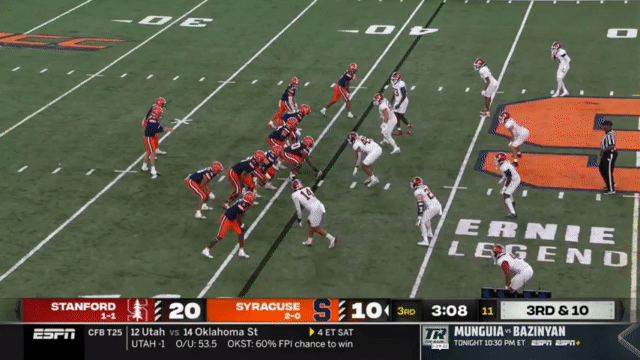
With McCord’s experience, he does a great job on throws with anticipation and does a good job throwing the ball with timing:
McCord is a smart quarterback. Consider the following play: On 3rd and 1 with the defense expecting a run, McCord knows he has a one-on-one matchup outside. Although he is capable of leading his receiver with the throw, he instead underthrows it slightly, because only one of three things can happen here: he gets the touchdown, his receiver draws defensive pass interference coming back to the ball, or worst case scenario it falls incomplete:
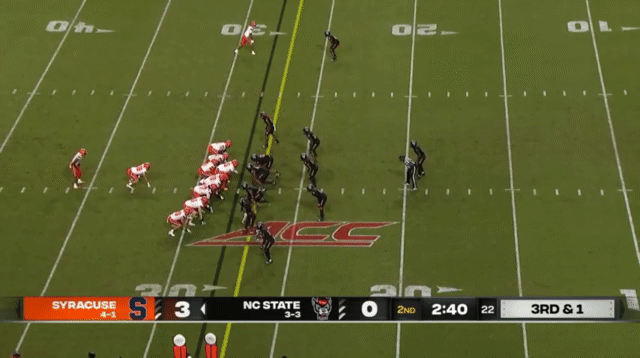
Unsurprisingly, Kyle McCord had very good pass protection at Ohio State, and so McCord is under pressure more often this season (facing pressure on almost twice as many dropbacks, per PFF). Although still a concern for McCord, he has significantly improved his throwing under pressure:
McCord can buy time in the pocket to find his receivers:
McCord shows good pocket awareness and keeps his eyes downfield:
An underrated ability of McCord’s game is his mobility in the pocket. Although Syracuse tends to shy away from straight-up scrums with their quarterback (there’s usually some level of misdirection involved on the QB sneak), McCord can still pick up yards with his feet:
The following play gets called back for a weak hold, but here’s an example of McCord’s ability to run in the open field:
And this play shows McCord’s willingness to put his body on the line, in a way you’d rarely see from both a senior quarterback and pocket passer:
With all that said, after the gauntlet of quarterbacks that the Cal defense faced last year—multiple NFL 1st Round Draft picks, and where the ACC’s best QB this year was only the 5th or 6th best quarterback in the conference—I think this is a challenge that the Cal defense can handle.
McCord can be inconsistent with his footwork, which can lead to errant throws:
Although McCord is generally a very accurate passer, one area of concern is his consistency in accuracy on deep throws. This sort of play might work when you have Marvin Harrison Jr. downfield:
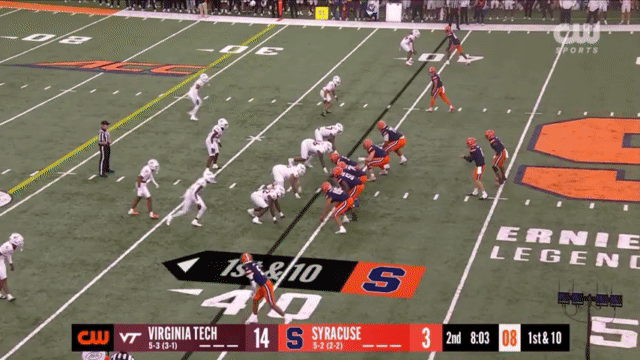
McCord also struggled to layer throws over defenders at times, particularly underneath defenders.
McCord’s willingness to try and make a play has backfired at times, and he has made a number of dangerous or ill-advised throws (and hence his 12 INTs in 9 games at Syracuse after throwing 6 INTs all year at Ohio State):
McCord also occasionally predetermines where he’s throwing the ball before the snap, which has led to him forcing throws he shouldn’t:
Here’s another example of a predetermined read, where McCord doesn’t see the wide open receiver down the seam, and instead makes a bad throw for an interception instead:
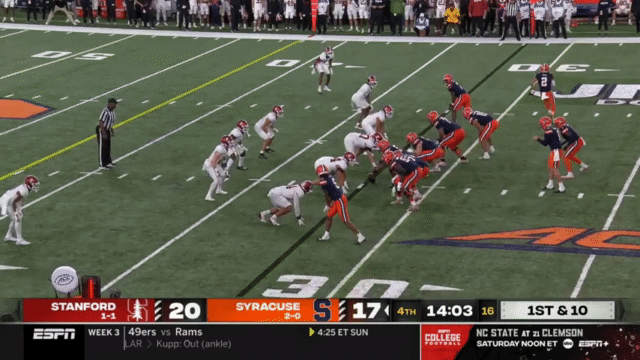
Pitt probably had the best gameplan so far against McCord: their strong defensive line continually pressured and harassed McCord into making mistakes, and they knew McCord’s tendencies and where he liked to throw the ball under pressure, so Pitt would drop linebackers into coverage to defend the underneath throws. As a result, Pitt had 5 interceptions and 3 pick-6s against McCord:
I don’t know if Cal’s defensive line will be able to pressure McCord the way Pitt’s did, but I anticipate that Cal will try to take away McCord’s favorite throws in the middle of the field.
In short yardage situations, Syracuse typically turns to the former backup quarterback and now tight end, Dan Villari:
Here’s another strong run:
And here Syracuse uses Villari as part of their short yardage misdirection, where Villari is the man in motion but sneaks in to take the snap under center:
I haven’t seen Villari throw the ball, but seeing as he was recruited to Michigan as a quarterback, I assume he’s plenty capable of throwing the ball as well.
The Syracuse offense has been one-dimensional at times, so if the Cal defense can disrupt the Syracuse passing game, they would be in for a long day.
Running back
The Syracuse rushing attack is led by RB LeQuint Allen Jr. Unsurprisingly for such a pass-heavy team, Allen’s key skill is his versatility in the passing game. Of course, if you want to get some touches in this offense, you need to be able to receive. Allen has shown some surprisingly nice ball skills as a receiver:
Allen isn’t the type of running back that needs a perfect pass; he’s plenty able to wrangle errant throws and still make the catch:
One of Allen’s best traits as a runner is his running back vision:
Although Allen isn’t going to blow you away with his top end speed, but he does well to identify his blocks and can make a nice cut:
Allen is a North-South runner; he doesn’t waste time with lateral runs or trying to make a man miss in a phone booth, he is looking to accelerate to top speed and run straight through the tackles:
And here is perhaps a better example of that, on a typical Allen run:
And here Allen lowers his shoulder for yards:
Allen has come up big in clutch moments this year for Syracuse, probably his most underrated trait. He had this crucial run to keep Syracuse’s hopes alive on their final drive of regulation:
And with the game on the line, he had the following play of just pure individual effort and wanting it more:
The backup to Allen is freshman Yasin Willis, a promising prospect given his size and speed. Willis has missed the past two games with an injury, but is currently listed as questionable to return.
It’s unlikely that Syracuse will lean all too heavily on the run game, but it’s there to keep defenses honest.
Receivers
Syracuse has a lot of talent and depth at the receiver position. Without question, the player to watch for is Oronde Gadsden II, the son of former NFL wide receiver Oronde Gadsden. The 6’5” 236 lbs Gadsden is a receiver that has recently converted to tight end, and he’s somewhere in between those two positions. Gadsden is absolutely an NFL talent, but I have no idea how he projects at the next level, let alone at which position. His physical traits combined with his versatility to line up all over the field to create mismatches is the type of rare blend of traits that gets NFL teams will take a chance on in the early rounds. Gadsden clearly has the skills of a very big receiver and is relatively new to the tight end position, so those TE-specific skills (read: blocking) are a work in progress.
Gadsden’s combination of size and speed make him a difficult matchup for any defender to cover, a wide receiver in a tight end’s body. Although he has the size and frame to box out and overpower smaller defenders, he will get separation with clean routes and his sudden change of direction, as well as his ability to maintain speed on the break:
The big-bodied receiver excels in contested catch situations, using his frame and sure hands to make the catch:
Gadsden does well tracking the ball and putting himself in position to make the catch:
And of course, Gadsden is difficult to bring down, and will generate yards after the catch:
I’m probably not doing Gadsden justice with the number of highlights I chose here - he so routinely made nice plays that they didn’t become “highlight worthy”, lest I just include half a Syracuse game here. Gadsden is the best TE since NCSU’s TE Justin Joly, who Cal also struggled against. Gadsden will line up all over the field to create mismatches (although he looks the most natural as a big slot receiver), so the Cal defense will need to get creative in trying to shut Gadsden down.
Kyle McCord’s most often targeted receiver is the slot receiver, Trebor Pena (and whose name is not a typo, no matter how much my autocorrect insists). He’s a speedy, sharp route runner, with a knack for finding the soft spots in zone. He has good hands:
He shows good concentration, and can hang onto the ball through contact:
Pena is a frequent redzone target:
Pena will do most of his damage in the deep middle of the field:
Pena is a shifty, agile runner in space, and hence he’s also the team’s kick returner. Here he does a good job of finding his running lane:
While Kyle McCord transferred from Ohio State, Fran Brown brought a couple of blue chip receivers with him from Georgia: Zeed Haynes (out due to personal reasons, and reportedly has yet to return to practices) and Jackson Meeks.
Meeks is the team’s primary deep threat, and actually leads the team in contested catches — including an impressive 5/6 contested catches on throws over 20+ yards. Meeks is the quintessential “F— it, he’s down there somewhere” receiver. A lot of Meeks routes are down the sideline:
Meeks shows nice body control and high-points the ball to catch it away from his body:
Here Meeks shows some nice ball skills:
And again with a nice contested catch over the defender, at a point in the game where refs often let pass interference and defensive holds go uncalled:
The other deep threat receiver is Umari Hatcher, who has the Syracuse’s biggest play of the season at 67 yards:
Although Hatcher’s contested catch clip isn’t quite as high as Meeks, that may be due to the fact that Hatcher gets more separation deep down the field:
This seems to be a common theme among the receivers, but here Hatcher does a nice job adjusting to the throw:
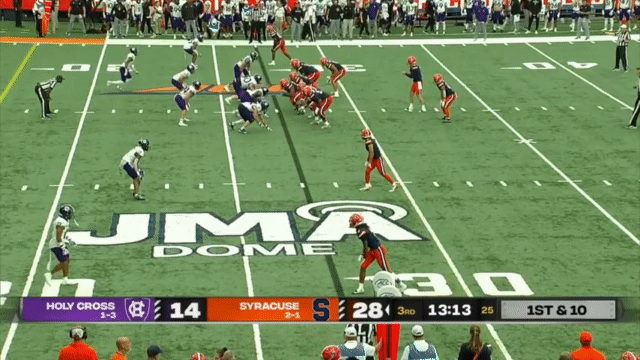
The backup tight end (and former QB) Dan Villari isn’t a frequent pass catching target, but he has also shown some nice ball skills:
Backing up Jackson Meeks at the WR-X position is Darrell Gill Jr., who has the most targets and yards of any backup receiver:
WR Justus Ross-Simmons hasn’t played a whole lot of snaps, but he’s started to make an impact after getting some playing time in recent weeks. Here he has a nice run after the catch:
And here he again breaks free for a big run after the catch for a 55 yard TD:
Backing up Pena is the true freshman Emanuel Ross, a 4-star recruit, who makes this catch on a route out of the backfield for a nice gain:
In Cal’s previous ACC matchups against good ACC quarterbacks, the receiving corps weren’t quite as talented. This is Cal’s first matchup against a team with both a strong quarterback and a strong receivers room.
Special teams
Syracuse’s special teams is worth noting, because I feel like it may have an impact on this game. If you’ve been frustrated with Cal’s special teams this year, then Syracuse fans definitely know how you feel, because these units have similarly struggled. Although the punting is good (Jack Stonehouse/Lachlan Wilson are 2nd/3rd in punting yards in the conference), the kicking units have struggled big time.
Syracuse has tried 3 different FG kickers, and they are collectively 1/6 from 40+ yards and 0/0 from 50+, which shows you the level of faith they have in their kickers:
The kicking unit is kicking 53.8% on their FGs (for comparison, Ryan Coe is 56.3%):
Suffice to say that Syracuse will often go for it on 4th down, regardless of the down and distance.
Conclusion
Yes, the Syracuse passing offense is going to drive down the field and score points, and QB Kyle McCord is going to make some high difficulty throws that are difficult to defend. But as I have said almost every week in the weekly Around the Horn series, this is a one-dimensional offense with little run game to speak of, and a very questionable defense. Syracuse is currently 96th in the FBS in points allowed per game (30.4), just ahead of Oregon State (30.5) for comparison. Syracuse has struggled to keep contain on the edges for runs to the outside, and their defensive backs have struggled in run support. More troubling is their defensive gameplans. Against Boston College, a prolific rush offense playing their backup quarterback, the Syracuse defense kept a light box and allowed BC to run all game long instead of challenging BC’s backup QB to beat them through the air. Against Stanford (Stanford!), currently one of the worst teams in the FBS, the Syracuse defense was torched in embarrassing fashion. On the final drive of the game, everyone on the field should know where Stanford is going with the ball. You can watch any Stanford game from the past two years and see that there is one receiver that Stanford will always target in these situations, Elic Ayomanor. On the very same drive, the Stanford QB had continually forced throws to Ayomanor beyond all reason. It’s 4th and 9 on the final drive, with Stanford down by 1. Where do you think the ball is going? Syracuse left Ayomanor in single man coverage, so of course the ball is going there, and of course Ayomanor makes the catch to set up the game-winning FG for Stanford. The Syracuse defense has some individually impressive players—DE Fadil Diggs and LB Marlowe Wax, for example—but the defensive scheme has been absolutely head-scratching at times, which is how you drop a game to Stanford, a team whose running backs have a combined zero touchdowns through 9 games of the season, and whose quarterbacks average 175 passing yards per game.
If Cal can disrupt the Syracuse passing game and force McCord into making some mistakes, it will be a long day for Syracuse. If, in the more likely event that they can’t, Cal will end up in a game reminiscent of last week at Wake Forest, where the Cal offense will end up in an offensive shootout in which Cal fans can never relax until the clock hits 00:00.
As always,
Go Bears.
You can find my full clips here.


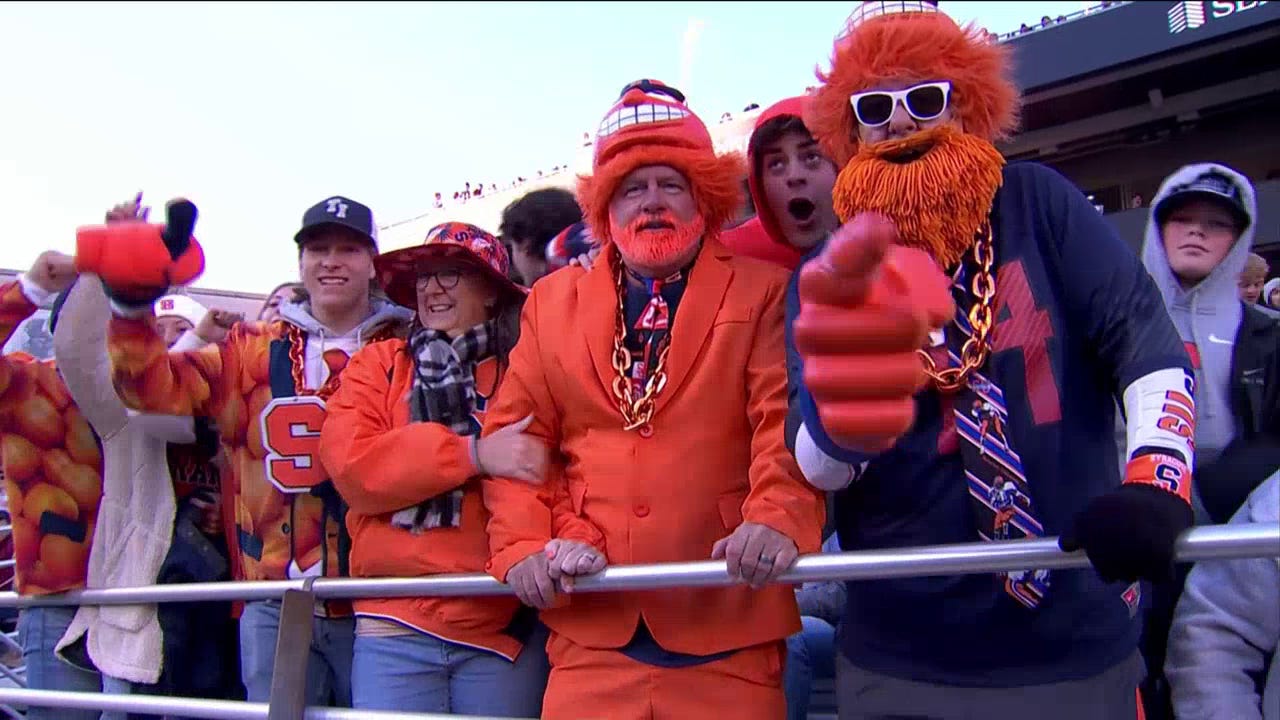
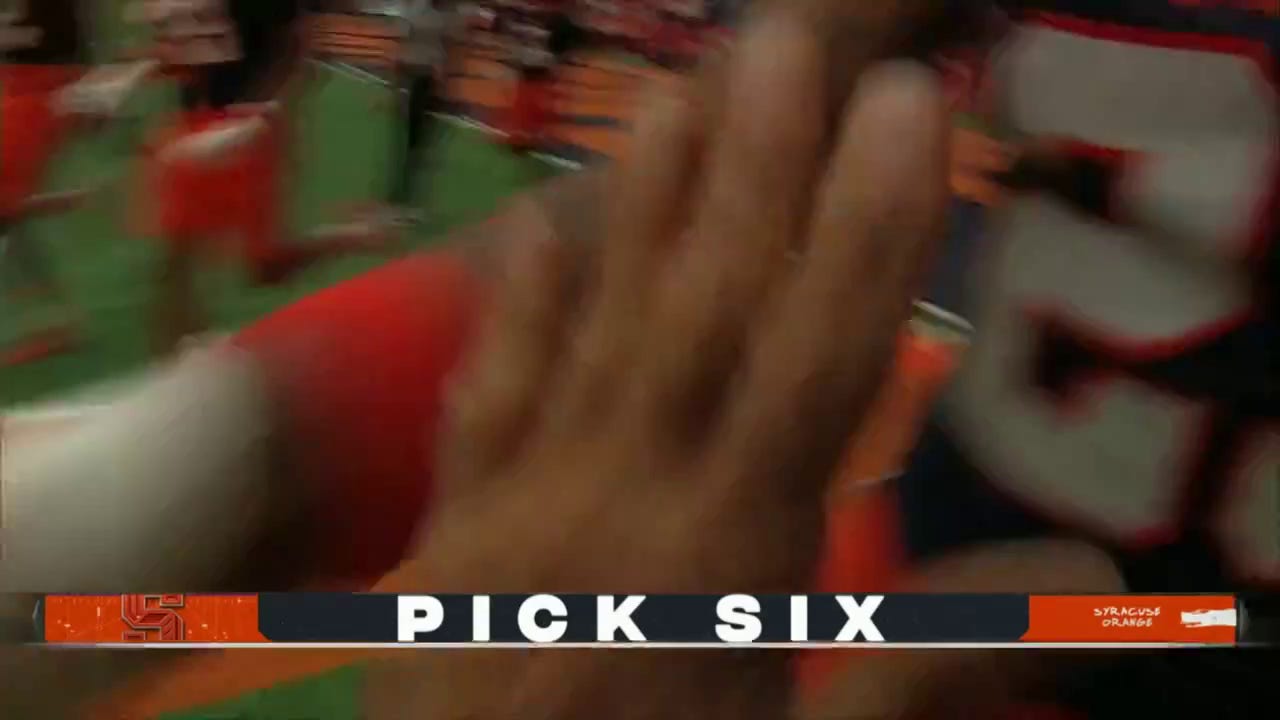

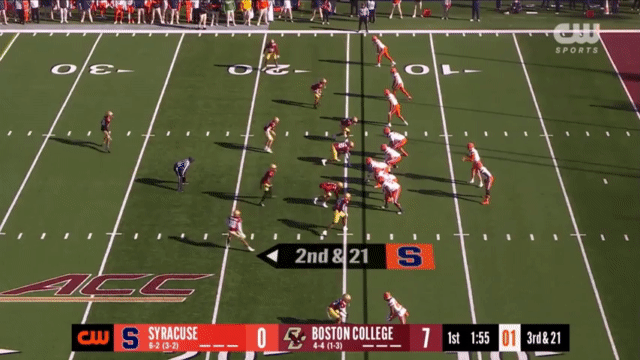
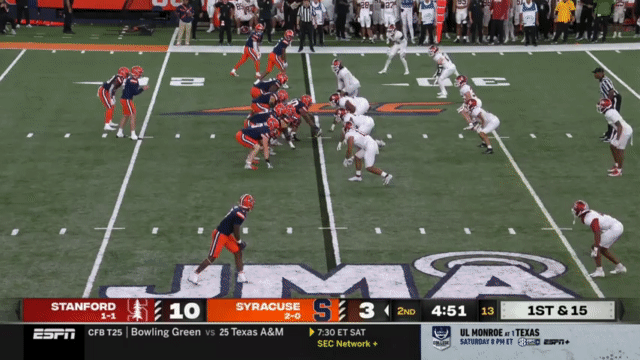
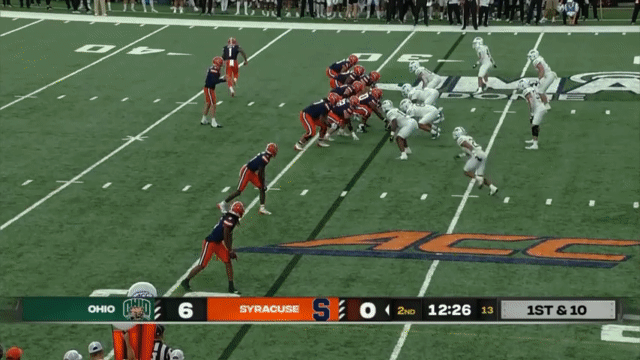
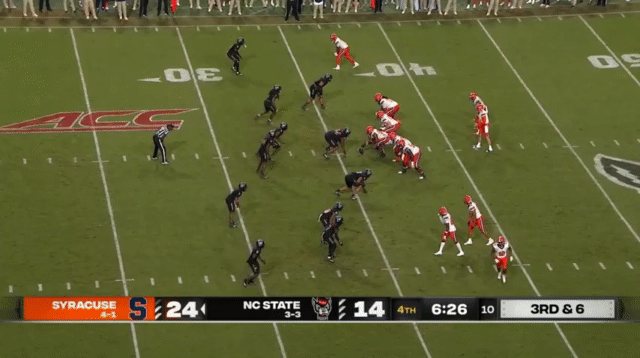

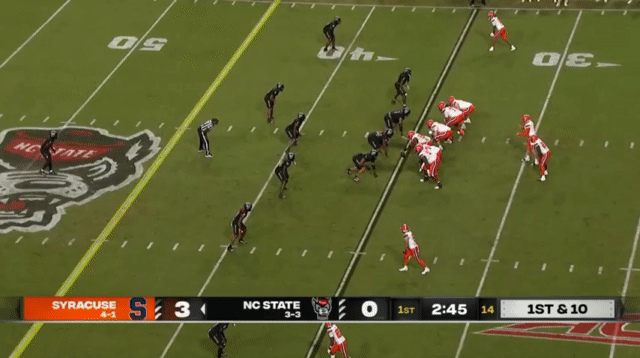
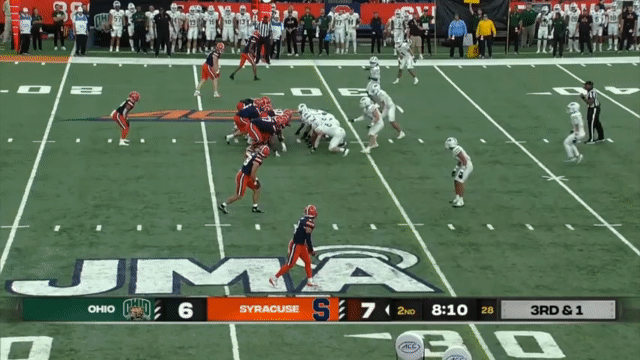
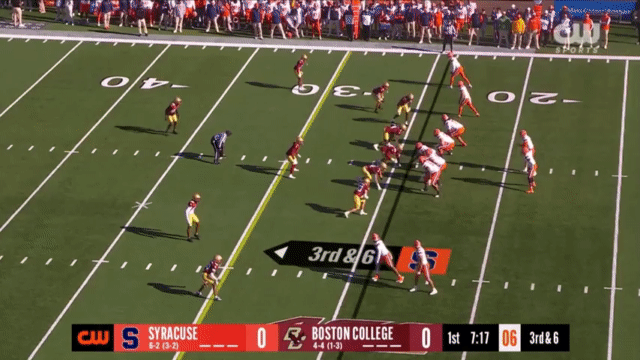
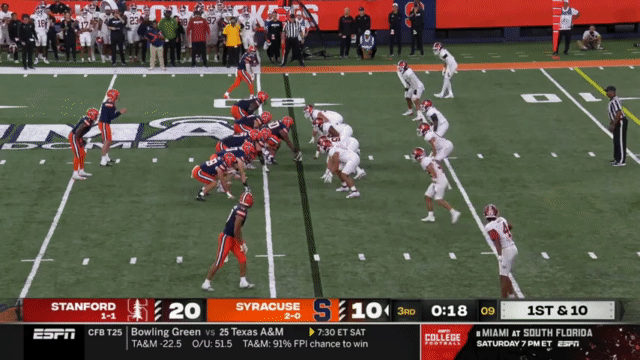

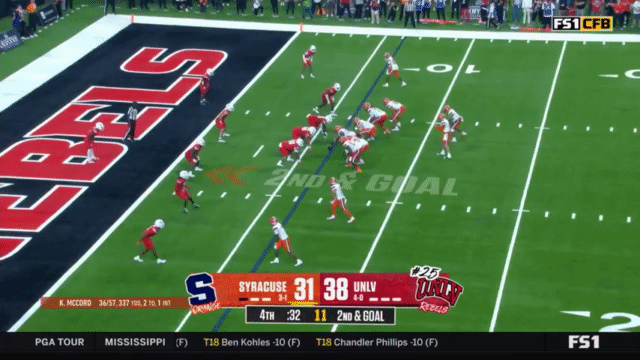
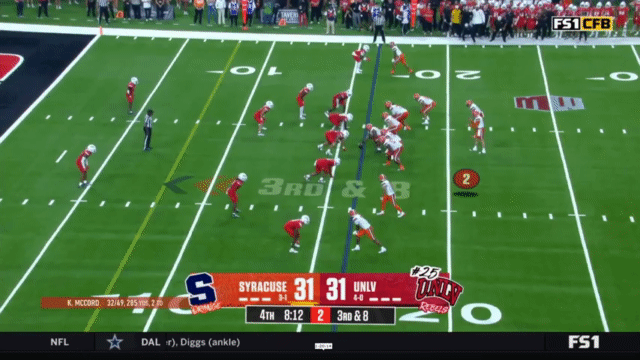


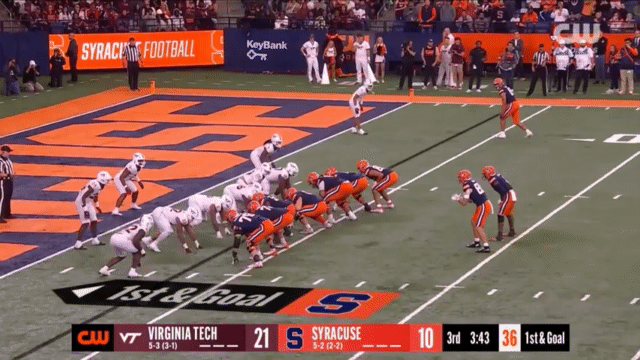
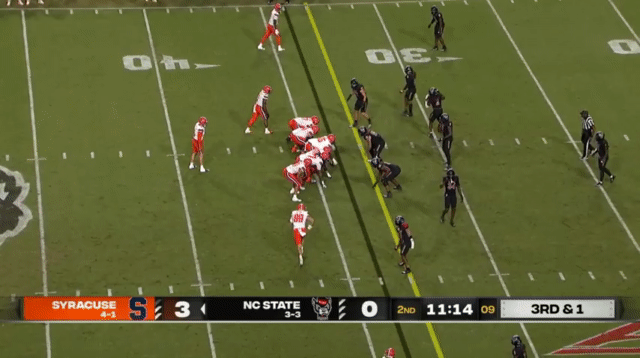
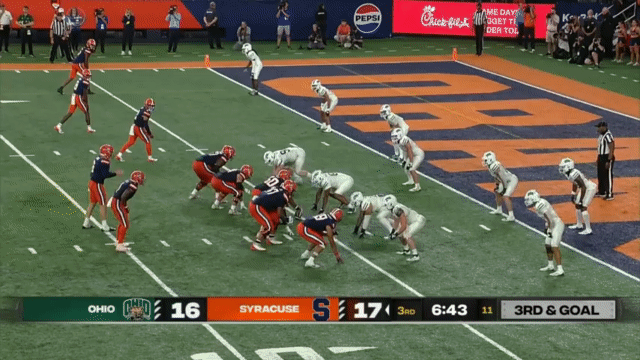
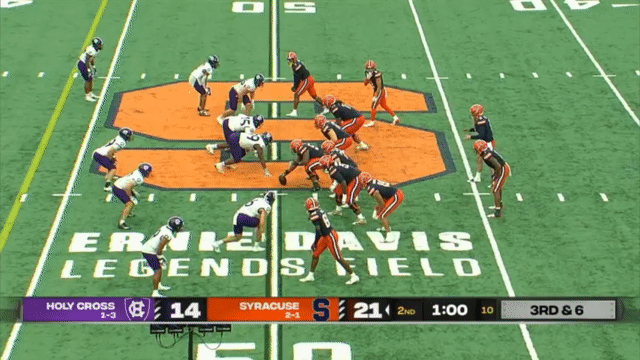
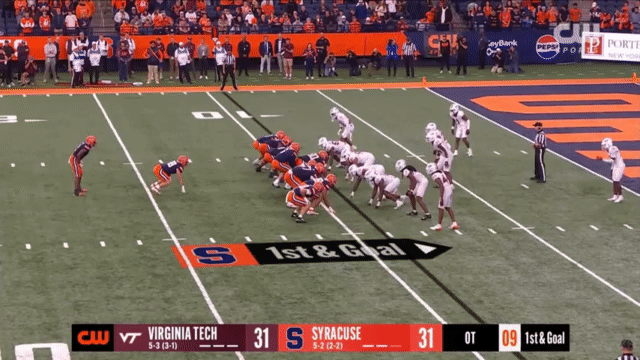
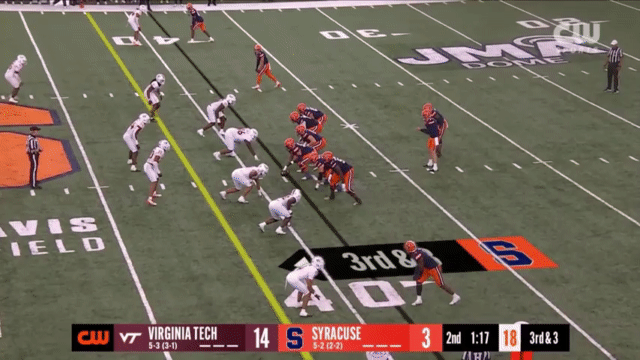
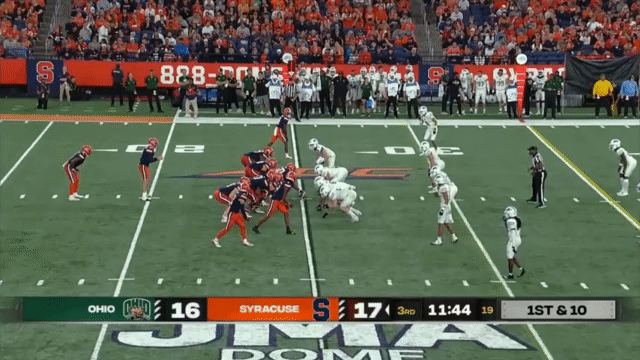
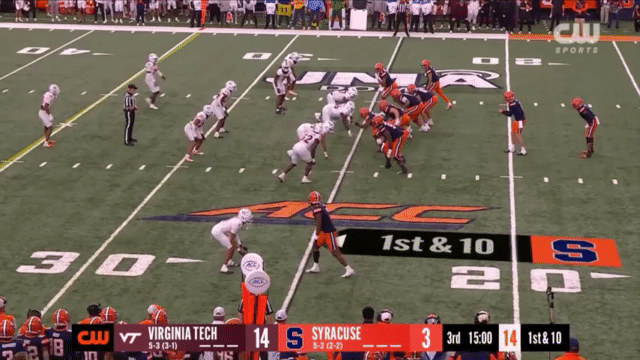
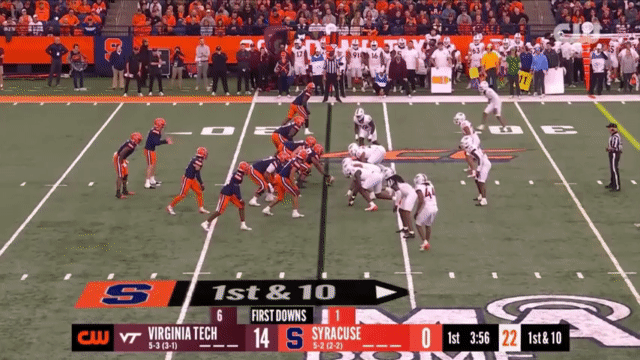


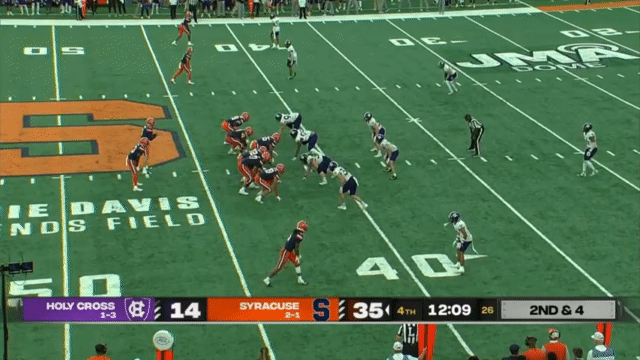
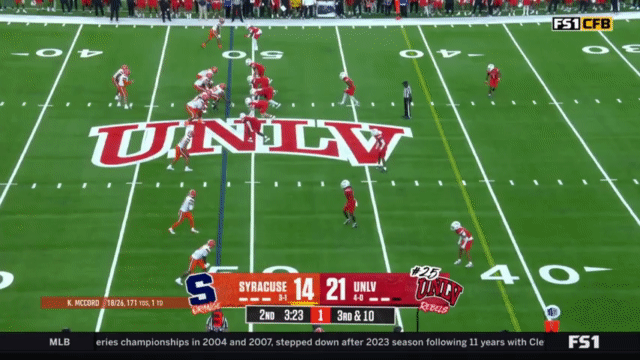
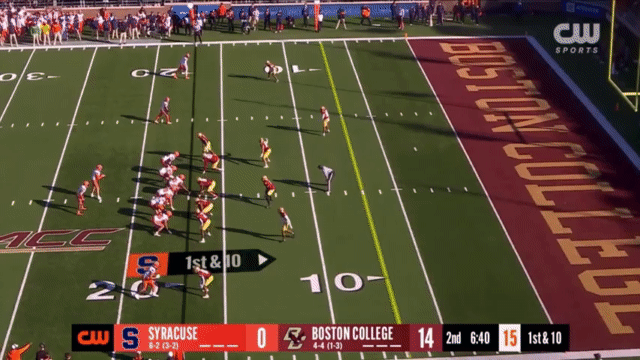

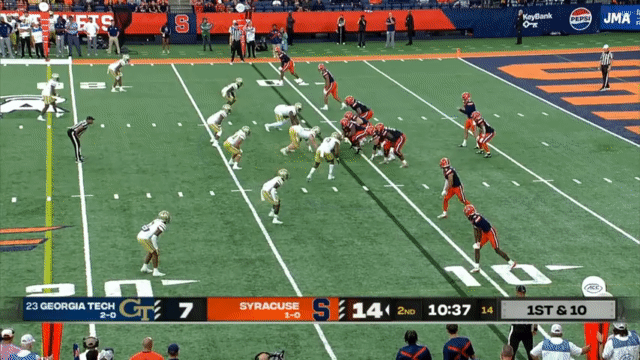
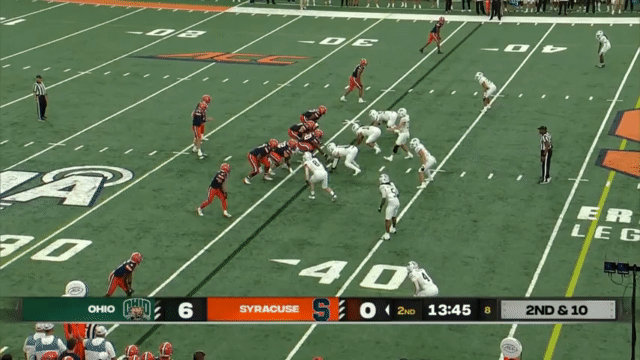
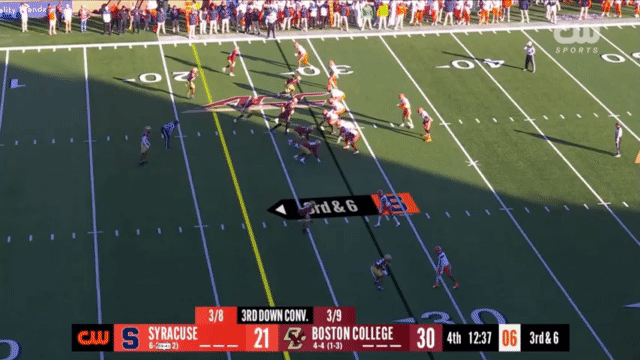
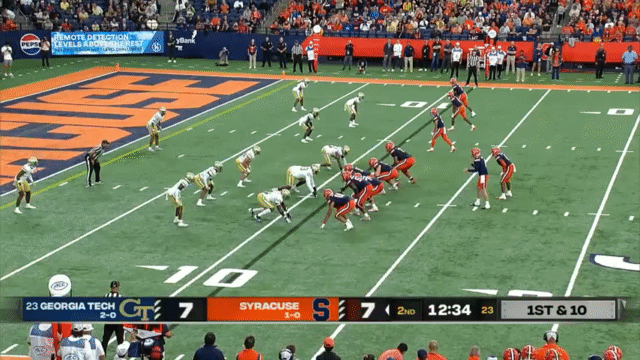
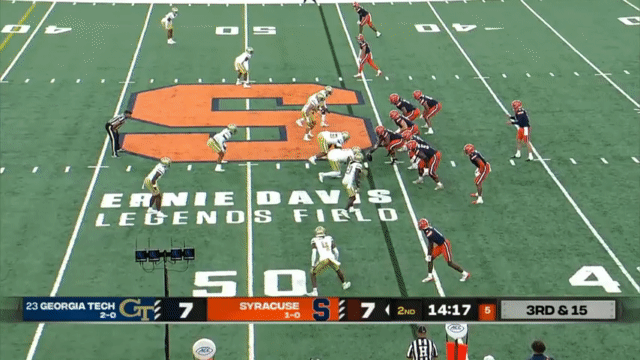
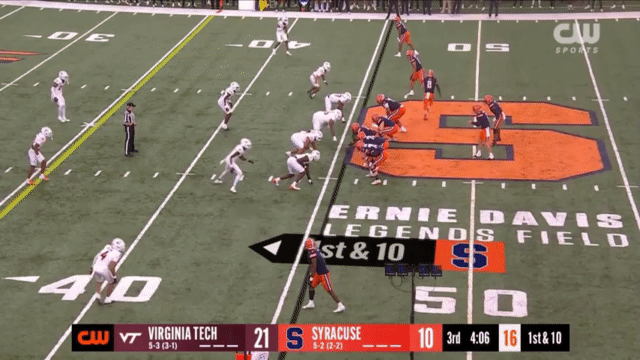
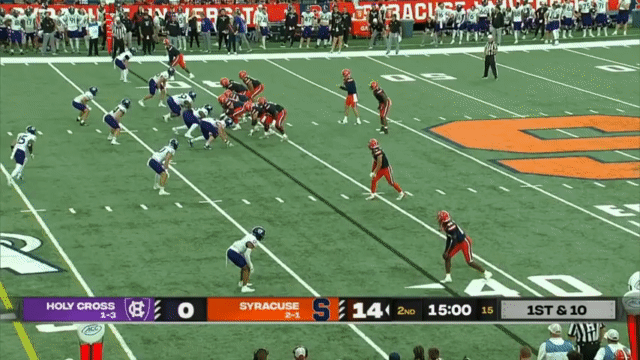

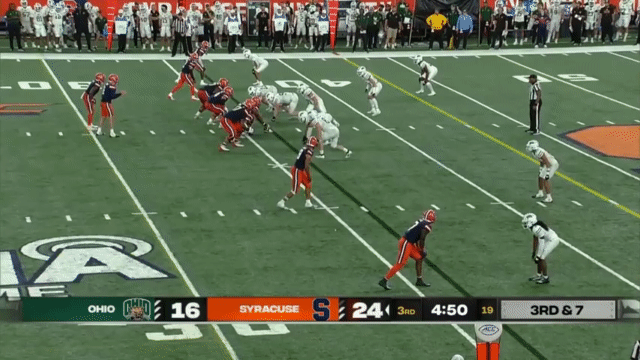
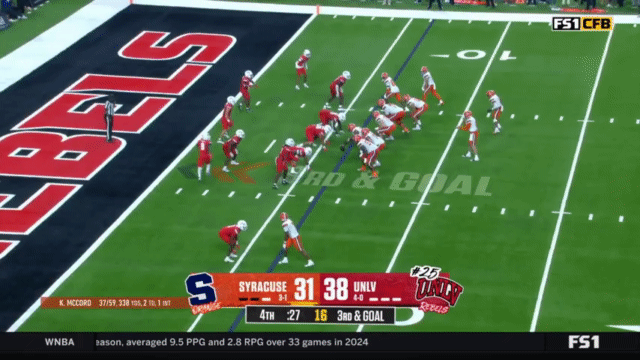
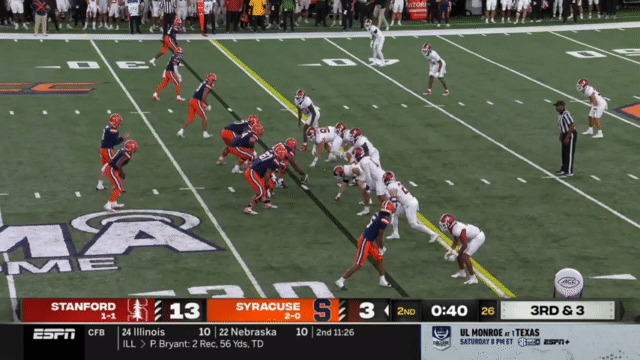
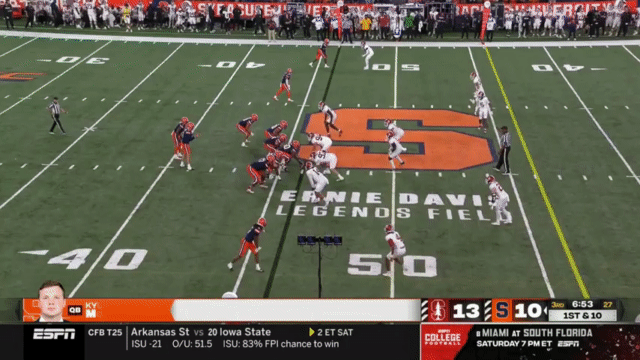
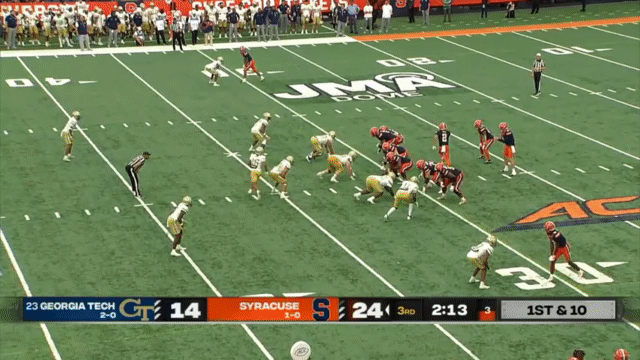
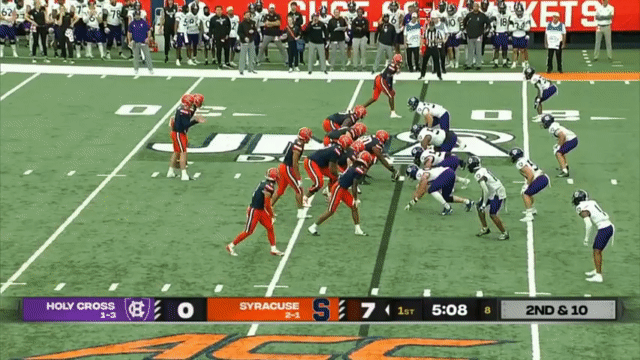
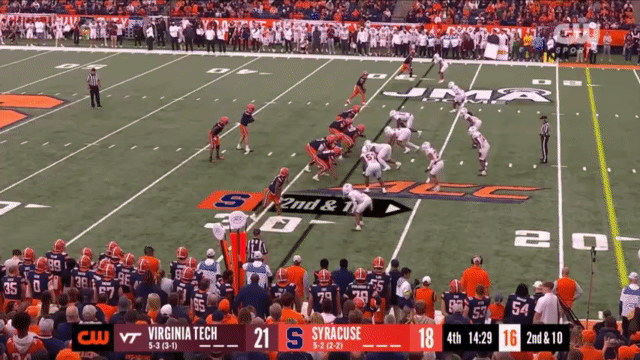

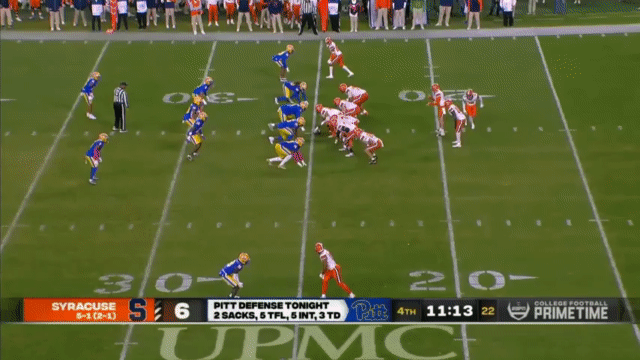


Great preview Mr. Helling, thank you. Is there such a thing as a rock fight shootout? This will be a heck of a game; I am looking forward to it. Go Bears!
Thank you